A quick explanation and visual overview of the AWS Route 53 policies (with the exception of Geoproximity Routing).
Simple Routing Policy
Use for a single resource that performs a given function for your domain, for example, a web server that serves content for the example.com website.
Important points to remember:
- Simplest routing policy
- Only one DNS record set
- Multiple IP address per record set can be used
- Values are returned to user in random order
- No health checks
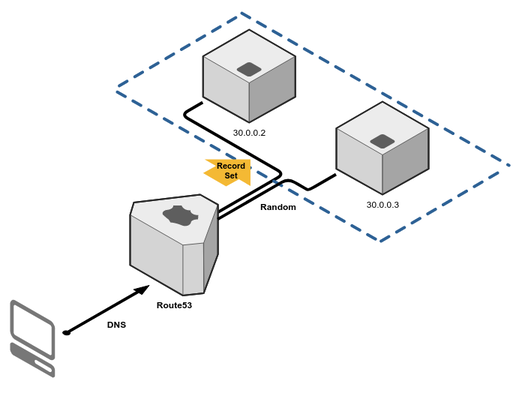
Weighted Routing Policy
Weighted Routing Policy controls the percentage of the requests that go to a specific endpoint.
Important points to remember:
- Weighted routing sends user traffic based on the weight that you supply
- You can split traffic between different regions
- Multiple IP address per record set can be used
- Health checks can be used
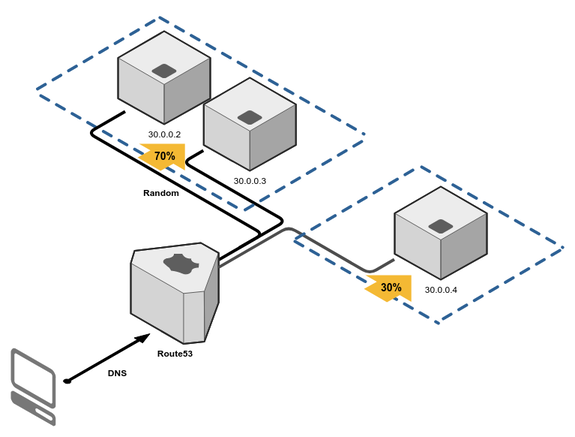
Latency Routing Policy
Use when you have resources in multiple AWS Regions and you want to route traffic to the region that provides the best latency.
Important points to remember:
- Routing will be based on user to region latency
- Multiple IP address per record set can be used
- Health checks can be used
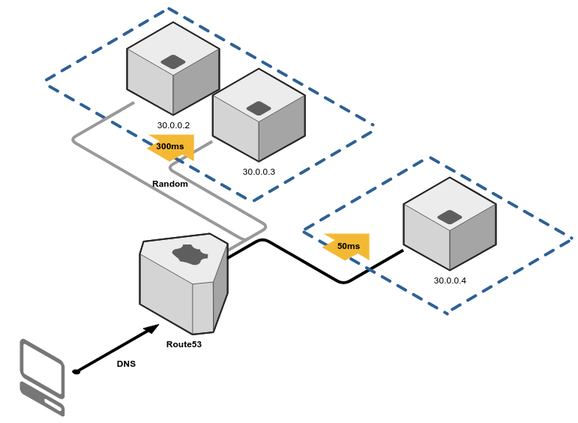
Failover Routing Policy
Use failover routing policy when you want to configure active-passive failover.
Important points to remember:
- Use failover routing policy when you want to configure active-passive failover
- Health checks
- You can’t save the primary record without a health check
- The secondary record can be created without a health check
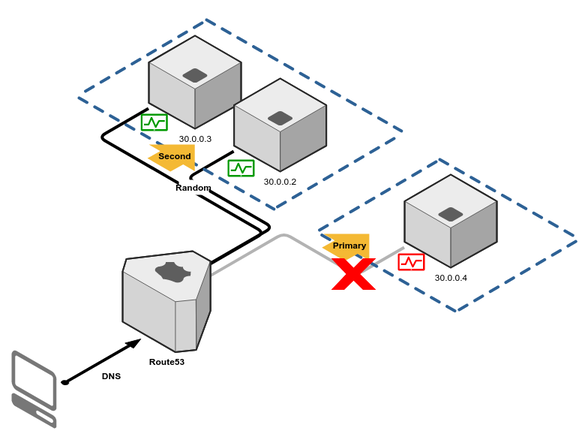
Geolocation Routing Policy
Geolocation routing lets you choose the resources that serve your traffic based on the geographic location of your users, meaning the location that DNS queries originate from.
Important points to remember:
- This is routing based on user’s location
- Multiple IP address per record set can be used
- Health checks can be used
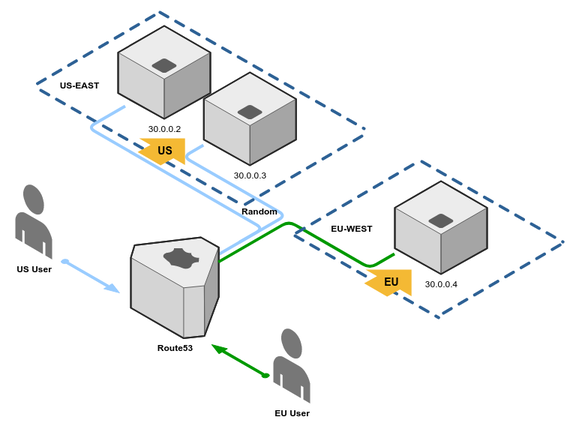
Multivalue Answer Routing policy
Use when you want Route 53 to respond to DNS queries with up to eight healthy records selected at random.
Important points to remember:
- It’s very similar to simple routing, but with two differences:
- You can have multiple record sets
- You can have health checks
